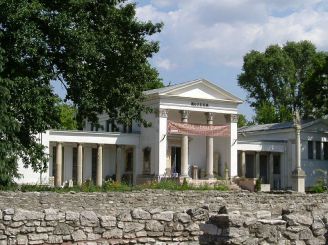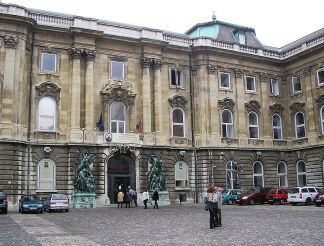Aquincum Museum, Budapest

The Aquincum Museum in Budapest is the largest in Hungary. It includes a park-museum in the open air and the museum building itself. This is a unique archaeological monument that shows the very beginning of the history of Budapest. The center of the ancient Roman city of Aquincum with an amphitheater, statues, sarcophagi and the bases of houses are located on the large territory. The museum is part of the UNESCO World Heritage Site.
History of the city and museum
The ancient Roman city of Aquincum was founded as a legion's stronghold on the site of the Celtic settlement in the 1st century. Soon it grew and became the capital of the province of Pannonia. By the end of the 2nd century there were already about 40,000 inhabitants. The city developed, attracting wealthy merchants and aristocrats. In the heyday its inhabitants had all the benefits of a highly developed Roman civilization. But already in the 4th century the city fell under the onslaught of nomadic barbarian tribes. Today there are only 2 amphitheaters and the grounds of the houses.
In 1778, when building a cellar, a resident of Óbuda, part of modern Budapest, came across a part of the ancient Roman heating system. After that, throughout the century, archeological artifacts were regularly found here.
In the second half of the 19th century, excavations became systematic. In 1867, exhibits from Aquincum were presented at the World Exhibition in Paris. In 1880, the committee established a permanent excavation site, and in 1881 opened the entire surface of the amphitheater. On May 10, 1894 the building of the museum was opened for a visit. Soon the number of found exhibits increased, and part was placed under the open sky. In 1945, 5 bombs were dropped on the museum, causing significant harm. But already in 1948 the permanent exposition was reopened. In the second half of the 20th century, new excavations were carried out and active restoration work was carried out. As a result, the museum is now quite beautiful and has a good collection of exhibits.
Exhibits of Aquincum
The museum, in addition to the open-air archaeological park, includes several buildings. In total, the museum stores more than a million archaeological finds of different periods.
- In the main building, built in neoclassical style, there is a permanent exposition. There are mosaics, mural paintings and statues found in the palace of the Governor of Pannonia.
- On June 25, 2014 a permanent exhibition "History formed in clay" was opened. Through it you can learn about the role of ceramics, and in particular of bricks, in the creation of Roman culture.
- Another permanent exhibition is made in a modern format, and with the help of the latest visual technologies it offers visitors to learn about the history of Hungary, from the time of the Celts and up to the migration of the Hungarian tribes. It contains about 1200 exhibits.
- Truly the highlight of the entire collection is the ancient Roman portable Water organ, dating back to the year 228. It was found during excavations in 1931. Presumably, it was made of wood, leather, bronze and copper, and had 52 pipes (4 rows of 13 pipes). So far, discussions have been held about the way music was played on it.
In the archaeological park near the main building of the museum there is the city amphitheater of Aquincum. Slightly to the south there are the restored buildings of the Roman city. Among them – the villa "Hercules", Roman baths, built on the site of thermal springs. You can also see the ruins of the barracks, the Eastern and Southern gates of the camp of the Roman legion, the city walls. Another interesting find is the remains of the early Christian funerary chapel. During the excavation, another amphitheater, a military one, was discovered. It was supposedly used for the teachings of the legion posted here, and its area was larger than in the notorious Colosseum.
How to get there
The Aquincum Museum is located in the Obuda district that was once a separate city. All areas of excavation stretch on the Western bank of the Danube, along the island of Hajógyári-sziget. The main building and amphitheater are located on Szentendrei út. 135. A bit to the south, near the Arpad bridge, is the Zichy Palace and Margaret Island. You can reach the museum by the following types of transport:
- Bus routes 34, 106, 134, 923, 934. The stop is Záhony utca.
- Suburban train H5. It will be necessary to get off at the Aquincum stop, or Kaszásdűlő, and walk for about 10 minutes.
Opening hours: the archaeological park is open from 9:00 to 18:00 from April 1 to October 31. In winter, excursions are conducted only during favorable weather conditions. Exhibitions of the museum are open: from November 1 to March 31, from 10:00 to 16:00, from April 1 to October 31 from 10:00 to 18:00. Phone number (+36) 14301081.
Entry: the ticket price varies depending on the time of the year (the periods are indicated above). In summer, a full ticket costs 1600 Hungarian forints, in winter – 1000 forints. For pensioners and students – 800 and 500 forints respectively. The ticket to the park costs 1000 forints, with a discount – 500 forints. Data of March 2018.




